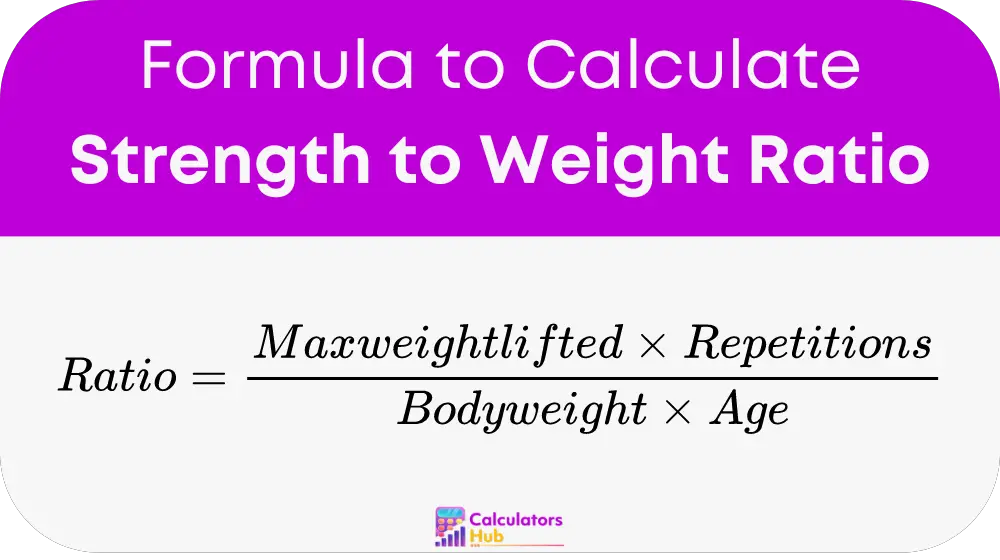The strength to weight ratio compares the maximum force or weight one can handle against their own body weight. This calculator uses specific formulas to transform input data such as the weight lifted, the number of repetitions, the lifter’s body weight, and their age into a ratio that offers valuable insights. For athletes, this can guide training adjustments and for engineers, it helps in evaluating material suitability in designs.
Formula of Strength to Weight Ratio Calculator
For calculating the strength to weight ratio, the formulas vary slightly by gender:

Variables Defined:
- Maximum Weight Lifted: The heaviest weight that can be lifted in one repetition.
- Repetitions: The total number of times the weight is successfully lifted.
- Body Weight: Weight of the lifter.
- Age: Age of the lifter, which can affect muscle and strength capacity.
Utility Table
Below is a table that represents common calculations using the strength to weight ratio formula. This reference is particularly useful for quickly estimating without performing manual calculations each time.
| Body Weight (kg) | Age (Years) | Max Weight Lifted (kg) | Repetitions | Strength to Weight Ratio |
|---|---|---|---|---|
| 70 | 30 | 100 | 10 | 4.76 |
| 85 | 25 | 120 | 8 | 5.65 |
| 60 | 40 | 80 | 6 | 2.00 |
Table: Sample calculations for common scenarios.
Example of Strength to Weight Ratio Calculator
Let’s calculate the strength to weight ratio for Jane, a 29-year-old female lifter who weighs 65 kg and lifted 85 kg for 12 repetitions. Using the formula:
Strength-to-weight ratio = (85 kg×12) / (65 kg×29) = 4.25
This result can be interpreted as Jane being able to lift 4.25 times the force of her body weight across her age multiplier, highlighting her strength efficiency.
Most Common FAQs
A: This ratio provides insights into an individual’s strength levels relative to their body weight and age, serving as a benchmark for comparing overall strength efficiency and monitoring progress in physical training regimes.
A: It’s ideal to calculate this at regular intervals, such as monthly or quarterly, to track training progress or before starting a new training phase to set baselines.
A: Yes, understanding your strength capabilities relative to your weight and age can help select sports or fitness activities that maximize your natural physiological strengths.